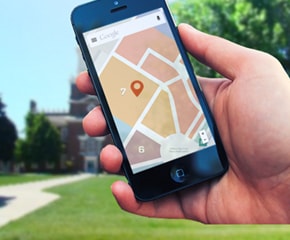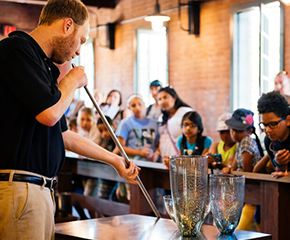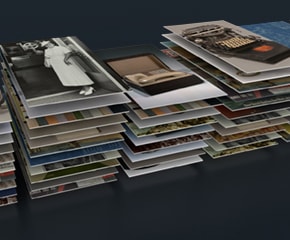Official Escorts for the Japanese Ambassador's Visit to the United States, 1860
Add to SetSummary
Professional photographers made photographic portraits like this carte-de-visite to mark important events. U.S. Navy officers, Samuel Francis Du Pont (center), Sidney Smith Lee (left) and David Dixon Porter (right) served as the official escort for Japan's first diplomatic mission to the U.S. This diplomatic visit fascinated many Americans and they collected carte-de-visite photographs to remember the celebrities. …
Professional photographers made photographic portraits like this carte-de-visite to mark important events. U.S. Navy officers, Samuel Francis Du Pont (center), Sidney Smith Lee (left) and David Dixon Porter (right) served as the official escort for Japan's first diplomatic mission to the U.S. This diplomatic visit fascinated many Americans and they collected carte-de-visite photographs to remember the celebrities.
Professional photographers often made photographic portraits to mark important events. Charles D. Fredricks and Co. of 587 Broadway, New York City took this carte-de-visite of three U.S. Navy officers, Captain Samuel Francis Du Pont (center), Commander Sidney Smith Lee (left) and Lieutenant David Dixon Porter (right). Beginning in March 1860, they became celebrities as the official escort for Japan's first diplomatic mission to the U.S. They accompanied the Ambassadors Masaoki Shinmi, Norimasa Muragaki, and Tadamasa Oguri, and their group during the three-month tour of Washington, D.C., Baltimore, Philadelphia, and New York City. Captain Du Pont had visited Japan in 1858 while commanding the USS Minnesota steam frigate. The 1860 Japanese diplomatic visit to the U.S. generated much publicity in newspapers and magazines and helped start U.S. trade with Japan.
Carte-de-visite, French for visiting card, was a type of small photographic print on cardboard stock that professional photographers made in the nineteenth century. Popularized by the French photographer, André Disdéri in 1854, this format measured about 4 x 2.5 inches - the same size as personal calling cards of that era. Photographers made a single glass negative and then produced multiple positive prints on paper and mounted them on the cards. The backs often carried advertisements for the photographer. When mailed in the United States between 1864 and 1866, the CdVs had a tax stamp on the back. This was a source of Federal government revenue to pay for the Civil War expenses. Popular in the United States from the 1860s through the 1880s, photographers continued to offer this size into the early 1900s. After having their portraits taken at the photographer's studio, people exchanged them among family and friends. As a favorite hobby, many people gathered CdVs into photograph albums to help them remember family and celebrities.
Artifact
Carte-de-visite (Card photograph)
Subject Date
1860
Keywords
Cartes-de-visite (Card photographs)
Card photographs (Photographs)
Du Pont, Samuel Francis, 1803-1865
Lee, Sidney (Sydney) Smith, 1802-1869
Collection Title
On Exhibit
By Request in the Benson Ford Research Center
Object ID
2005.0.21.2
Credit
From the Collections of The Henry Ford.
Material
Cardboard
Paper (Fiber product)
Technique
Albumen process
Mounting
Color
Black-and-white (Colors)
Dimensions
Height: 4 in
Width: 2.5 in
Inscriptions
Text printed center back of image: Charles D. Fredricks & Co. / "Specialite" / 587 Broadway, New York





